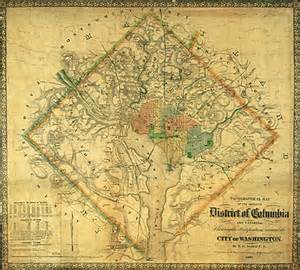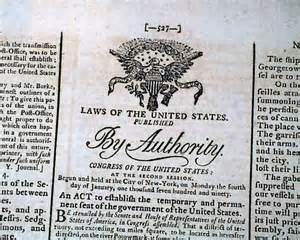The location of Washington, D.C., was the result of both a political compromise and a military imperative.
At the same time, a large group of soldiers from Lancaster, Pa., marched to Philadelphia, demanding the pay owing to them for their service in the Revolutionary War. A group of soldiers from Philadelphia joined the Lancaster group, and it was about 400 soldiers who marched to Independence Hall and blocked the doors, intending to deny exit for the Continental Congress until it paid the soldiers their unpaid wages. Alexander Hamilton slipped out of the hall to negotiated and convinced the soldiers to end their blockade so that Congress could consider the soldiers' plight without fearing for their lives. That same night, Hamilton met with other delegates to figure out a way to pay the soldiers. At the same time, other members of Congress met with John Dickinson, Pennsylvania's chief lawmaker, who tried in vain to convince the Pennsylvania state militia to protect Congress. As a result, Congress left town, moving their operations to Princeton, N.J. When the Constitutional Convention opened in Philadelphia, in 1787, the Pennsylvania Mutiny of 1783 was a distant, but not forgotten, memory.
In a private meeting also attended by James Madison, Hamilton and Jefferson factored the placement of the District of Columbia into a larger agreement over money. Jefferson pledged southern states' support for the Assumption Bill (which would allow the federal government to assume debts run up by the states during the Revolutionary War), and Hamilton agreed to support a southern location for the nation's capital. Pennsylvania delegates didn't want to see the capital leave their state, and Robert Morris won a concession that Philadelphia would be the capital city until the new one was built. (Even though the Constitutional Convention was taking place in Philadelphia, Congress was officially in residence in New York, so New York City was considered the capital city at the time.) Thus it was that the Residency Act, passed on July 16, 1790, announced the District of Columbia as the nation's capital but that the capital city was Philadelphia until May 15, 1800. |
|
Social Studies for Kids
copyright 2002–2025
David White



 Philadelphia had been the unofficial nation's capital for some years before the Continental Congress gathered in 1783. (Other cities in which the Congress met include New York; Baltimore; Annapolis, Md.; Lancaster, Pa.; Princeton, N.J.; Trenton, N.J.; and York, Pa.)
Philadelphia had been the unofficial nation's capital for some years before the Continental Congress gathered in 1783. (Other cities in which the Congress met include New York; Baltimore; Annapolis, Md.; Lancaster, Pa.; Princeton, N.J.; Trenton, N.J.; and York, Pa.) The Constitution that resulted from that Convention stipulated the creation of a federal district. The new Congress, meeting in 1789, proposed two locations, both in Pennsylvania (one in Germantown and another near Lancaster). The new nation's capital, however, was built on the Potomac River, carved out of land belonging to both Maryland and Virginia, as the result of a compromise between political rivals Hamilton and
The Constitution that resulted from that Convention stipulated the creation of a federal district. The new Congress, meeting in 1789, proposed two locations, both in Pennsylvania (one in Germantown and another near Lancaster). The new nation's capital, however, was built on the Potomac River, carved out of land belonging to both Maryland and Virginia, as the result of a compromise between political rivals Hamilton and 
